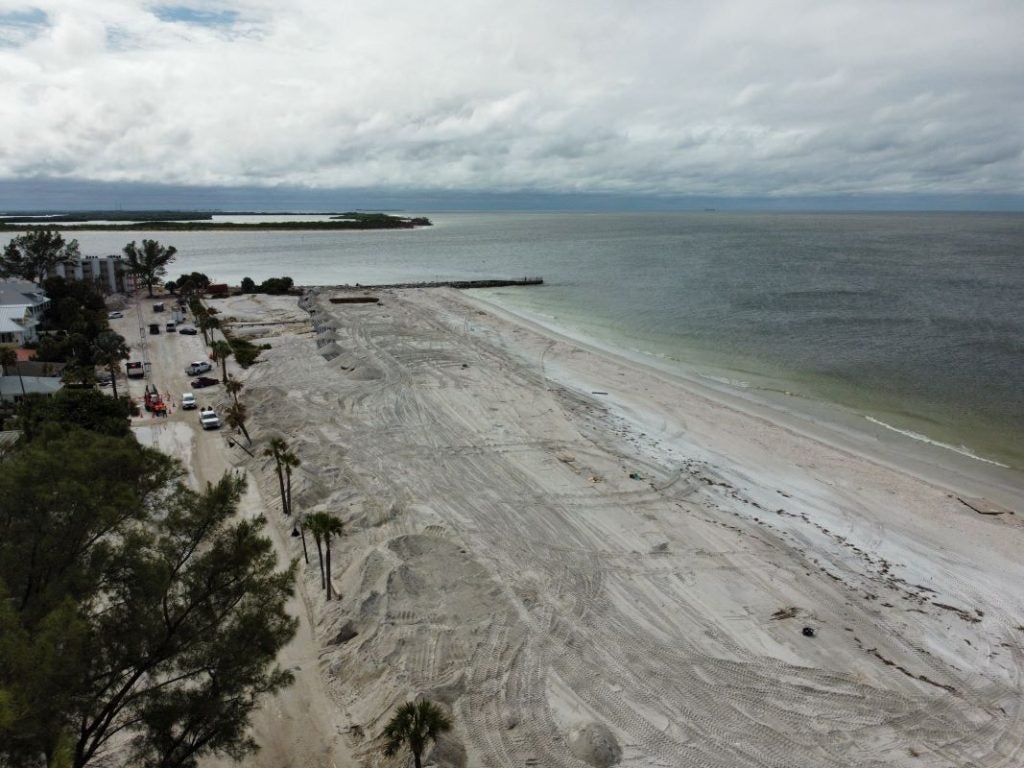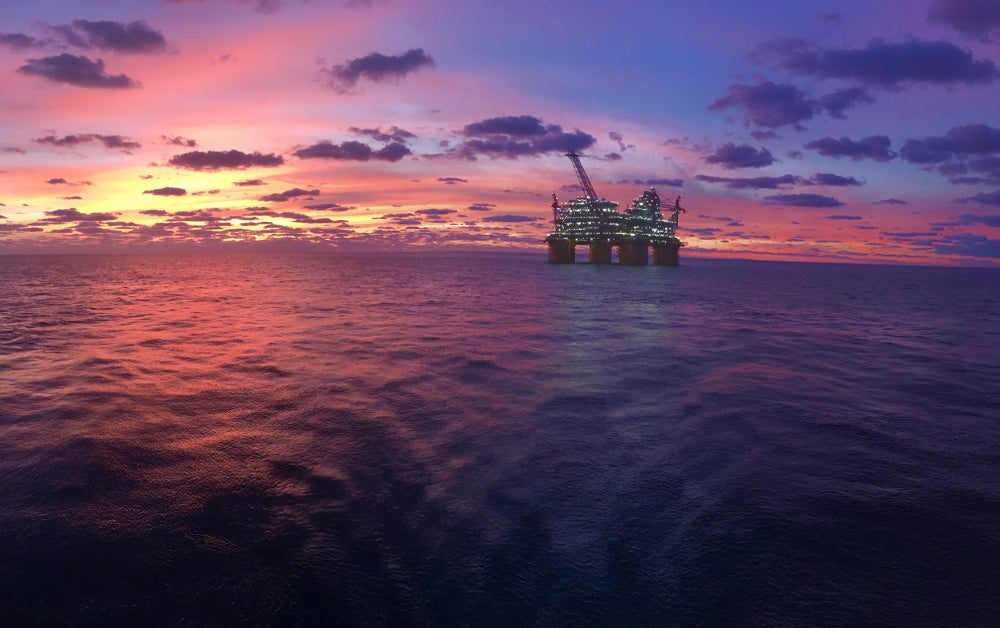
Gazprom‘s mighty Prirazlomnoye platform in the intensely inhospitable Pechora Sea is due to begin production this year and has been designed to withstand 5m-thick ice movements. At 117,000t (unballasted), this platform sits in 20m of water and is expected to operate through the 230 days when the area is ice-bound and temperatures drop to -50°C. Winds can reach 40m/s and waves up to 12m high.
The Russians describe the Prirazlomnoye as ‘the first ice-proof marine structure’. The oil it produces will be taken away by two specially built ice-breaking tankers, prompting platform designer Morneftegazprojekt to carefully consider the potential impact of the tankers’ movements on the surrounding ice.
More than three decades earlier, the drilling and oil production platform Molikpaq, now in service off Sakhalin, taught scientists a great deal about the influence of ice. The platform had previously been employed in the Canadian Arctic.
"The 1986 ice event that the Molikpaq structure met was 8-10m thick," says Dr Erland Schulson, director of the Ice Research Laboratory at Dartmouth, "and the platform was extensively instrumented for the structural responses due to ice loads and other environmental forces. So this event led to the generation of an awful lot of information on ice forces against structures. That information has been mined quite seriously and used quite well in subsequent designs."
Physics of fracture
The growing body of ice research is reviewed by Schulson with his French colleague Paul Duval in their book entitled ‘Creep and Fracture of Ice’, which examines work done both in the field by the likes of Sanderson and Exxon as well as in the laboratory, starting with the seminal paper on fracture mechanics by AA Griffith, which established that the fracture pressure scales as one over the square root of the crack’s size.
All the information within their book was both hard won and useful, insists Schulson, but "the data is not necessarily well understood from the point of view of the physics and the fracture – the process that is going on within the ice." This is where his work is focused.
How well do you really know your competitors?
Access the most comprehensive Company Profiles on the market, powered by GlobalData. Save hours of research. Gain competitive edge.

Thank you!
Your download email will arrive shortly
Not ready to buy yet? Download a free sample
We are confident about the unique quality of our Company Profiles. However, we want you to make the most beneficial decision for your business, so we offer a free sample that you can download by submitting the below form
By GlobalData"The physics of fracture is really governed entirely by cracks," he says. "The larger the crack, the weaker the body. So you say, on that simple kind of thinking, that a large piece of ice that has within it a large crack is likely to be weaker in compression than a small piece of ice. And we have developed models for fracture that do include size as a factor."
The science here links to the zone of high pressure, a central point where ice is not only in contact with a structure and being pushed against it, but is also being confined by all the ice around that central point.
"As a result, locally on the structure there are pressures that are significantly higher than the global pressures that one might expect, simply on the strength of the ice multiplied by the cross-sectional area," explains Schulson. "It was such a ‘hot spot’ of local pressure that caused the rivets on the Titanic to break, while it is global pressure that causes lighthouses to be tipped over."
Schulson points out that wing-like fractures on a body of ice in contact with a structure could have an important impact. "The centre point remains central as long as there is something for it to be centre of. But if the material on either side should no longer be on the side – if it fractures away – then the thing that was centred becomes the thing itself."
In his research, Schulson established that wing cracking can occur when ice is loaded rapidly under compression within the brittle regime.
"So maybe the activation of these wing-type cracks in the unconfined or relatively moderately confined regions – adjacent to the highly confined central region of contact within which the high-pressure zones exist – maybe the operation of this kind of mechanism helps to relieve some of the pressure and hence may not lead to the formation of such a zone," he says.
Damage control
Schulson points out that in his most recent work for the Bureau of Ocean Energy Management, Regulation and Enforcement (BOEMRE), he has been focusing on damage, introduced as a material factor. Schulson puts aside the argument that as a result of its thermo-mechanical history, ice is damaged and never pristine.
"Damage heals," he says. "But if it turns out, and we think it will, that damage – which is defined as the presence of cracks, short ones – does play a role in the transformation from ductile to brittle behaviour, then does the presence of damage raise the rate at which that transformation from ductile to brittle occurs?
"That is a very important transition in engineering design, because it marks the condition where the ice has its maximum strength. That transition from ductile to brittle behaviour is key. We have been able to show that if you actually do induce some damage, then the strain rate at which that transition occurs is somewhat higher than it would be in so-called virgin material, or at least material that had not been intentionally damaged."
The next step, says Schulson, will be to see what happens when the damage is healed and returned to some extent to the original structure and how long this healing takes.
"Imagine a sheet of first-year ice pushing rather slowly against an offshore structure through the action of wind and ocean currents, particularly wind, to such a degree that the ice, upon contact with the structure, begins to deform in a ductile manner and in so doing starts to generate, within the contact zone, quite a few short cracks which do not propagate," he explains.
Then the wind stops and the body of rather heavily damaged ice remains pushed up against the structure but the load is lower. If the wind resumes immediately and more rapidly, says Schulson, and the pre-damaged ice again pushes against the structure, because it has not healed, it will become more ductile.
If, however, the wind does not return for three or four days, "does that damage heal sufficiently to the point that it really is no longer as effective as it might have been in terms of raising the transition strain rate?" he asks.
Future of polar E&P
Until the 1990s, Schulson and his Dartmouth team hosted twice-yearly brain-storming sessions with eight US oil industry players, along with government agencies.
These meetings, in addition to generating a host of new ideas, also resulted in an influx of valuable research funding. However, in the decades that followed, American interest in the Arctic began to wane, and with it the regular meetings.
Maybe now, as Russia pushes hard into the challenging science of polar exploration and production, enthusiasm within the US oil industry will finally be rekindled, as is evidenced by Dartmouth’s ongoing partnership with BOEMRE.







